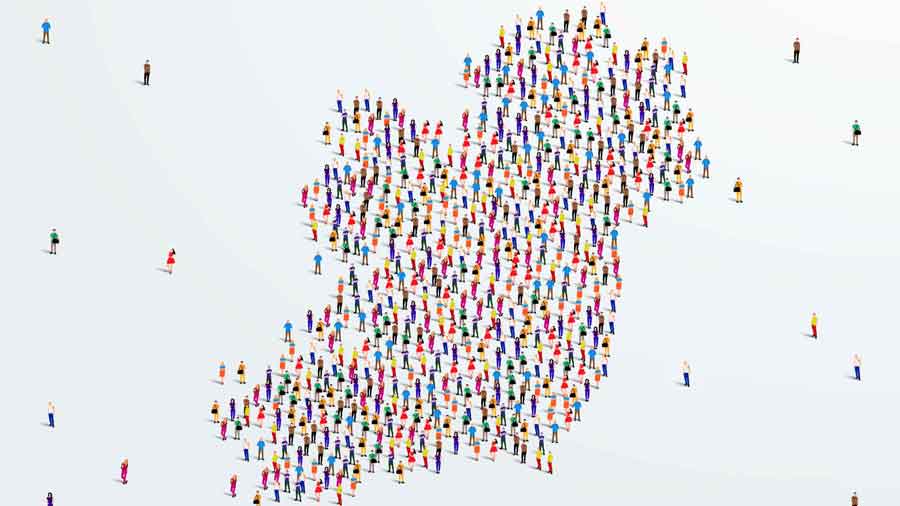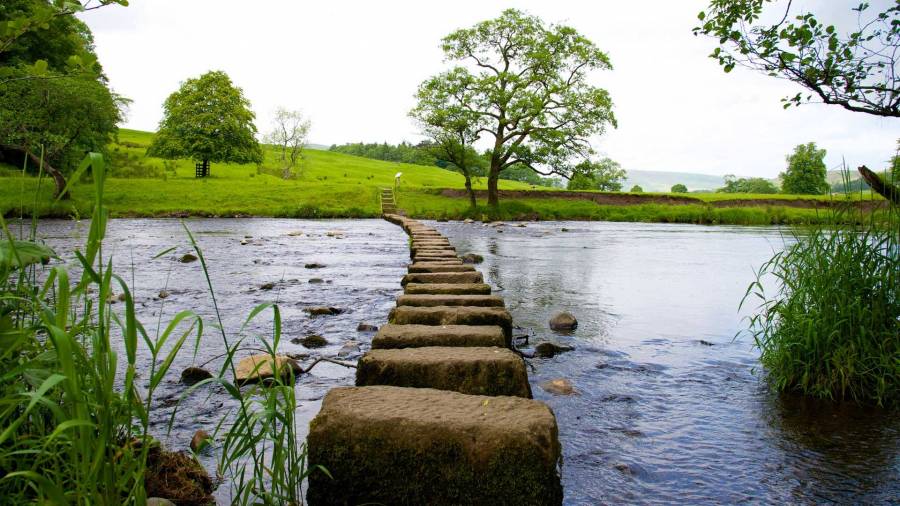Housing across the island of Ireland
What are the most pressing issues across the North and South of Ireland?

STRATEGY
Image: Istock

Paddy Gray
Professor of Housing
As we emerge from COVID-19 lockdowns, many households across the island of Ireland are in a fragile situation as pre-pandemic issues return. Here are my reflections on some of the most pressing housing issues on both sides of the border.
01
Housing supply and affordability
Prior to the pandemic, housing issues were of more concern in Ireland than in Northern Ireland.
A chronic lack of supply, particularly in urban areas like Dublin, Cork and Galway, has seen house prices and rents rise substantially since the 2009 financial crash (see box).
The Economist predicts that, by 2023, Ireland will be one of the top performers of the 16 global housing markets analysed. This might be good news for some, but will further exclude many from securing a decent affordable home – whether renting or buying.
House prices in Ireland
- Average home is €303,000
- €412,000 in Dublin and €254,000 outside Dublin.
- Average private rent across Ireland €1,256 in Q4 2020 (Dublin €1,745)
Source: MyHome.ie
MyHome data for the second quarter of 2021 shows the Irish housing market red-hot with price inflation: asking price inflation is now 12.9%, (10.6% in Dublin; 13.6% in the rest of Ireland). Rent inflation has also been of concern. One in three households in the private rented sector did not have enough income, after rental payments, to cover minimum living expenditure.
In contrast, the average house price in Northern Ireland is £189,853, up 6.9% on 2020. This defies predictions of a pandemic downturn and is the single biggest annual rise since 2016.
Such trends are fuelled by the ‘race for space’, with households looking for larger homes. Buyers also sought to purchase before the stamp duty holiday ended in June. Estate agents have noted the growing number of people moving back to Northern Ireland, drawn by cheaper housing and remote working opportunities. Average private rents in Northern Ireland are now around £674 per month – two-thirds that of Ireland.
Housing supply affects both sides of the border, although undersupply is much more acute in the South. In the North, the government is concentrating on meeting housing need and reviewing how social housing is allocated, following the 2013 fundamental review (Northern Ireland Housing Executive’s Consultation Outcome Report).
In the South, affordability is the major issue. Housing is out of reach for many young people, with high rents, deposits and strict lending rules. Mortgage lending rules are preventing a new generation of homebuyers taking on ever-higher levels of debt, while Ireland has the strictest loan-to-income (LTI) ratios in Europe.
02
Building homes
In the South, the Land and Development Agency (LDA) that was set up in 2018, is tasked with establishing a register of public land, aiming to work with local authorities and semi-state bodies to use public land more effectively.
The LDA will have first refusal on any sale of land by public bodies. Under Project 2040, €1.25 billion of capital is committed to build 150,000 homes over the next 20 years.
No such body exists in Northern Ireland. The Northern Ireland Housing Executive (NIHE) has not built new social housing since 2003 – that role being fulfilled by around 20 housing associations.
The problem of land availability is highlighted by the Northern Ireland Federation of Housing Associations (NIFHA). It calls for the prioritising of surplus public sector land for housing, with targets for its release.
03
Private rented sector
In Ireland, several interventions have targeted the private rented sector. Rent Pressure Zones (RPZs) were introduced in 2016 to limit the annual rise of rents to 4% for most new and existing tenancies. These now apply to much of the country.
In July 2021, the Housing Minister, Darragh O’Brien, announced that RPZs will be extended to 2024 and that future rent increases will be capped at inflation, replacing the current 4% cap on rent increases.
Any rent increase will be linked to inflation at the time of a tenant's rent review. The current provision for tenancies outside RPZs restricts rent reviews to every two years, and will also be extended to the end of 2024.
There is no rent cap in the North. However, in May 2021, the Northern Ireland Assembly proposed changes to: eviction periods; limiting deposits; giving councils new powers to enforce minimum energy-efficiency standards; and restricting rent increases to once per year.
“A chronic lack of supply, particularly in urban areas like Dublin, Cork and Galway, has seen house prices and rents rise substantially since the 2009 financial crash.”
04
New housing products
Both governments have proposed new products to support those who cannot afford to buy.
In the South, The Affordable Housing Bill 2020 introduced a new cost rental product with statutory footing, financed by the Cost Rental Equity Loan (CREL) scheme. The Housing Minister defined cost rental as a new form of tenure where tenants pay rent to cover the cost of delivering, managing, and maintaining the homes only. This is largely available to middle-income households and several cost rental pilots are already in development.
In the North, the Department for Communities’ (DfC) updated its definition of social housing to include the following three products:
- Social rented housing
- Intermediate housing for sale
- Intermediate housing for rent
All are provided for those whose needs are not met by the market.
05
Social housing
Both jurisdictions still have large housing waiting lists for social housing, despite the efforts of Approved Housing Bodies (AHBs) in the South, and housing associations in the North (See box: Waiting lists).
Addressing the Northern Ireland Assembly in November 2020, the Minister for Communities said that supply challenges in Northern Ireland cannot be viewed exclusively in terms of undersupply.
Meeting housing challenges should be about providing the right homes, in the right locations. Housing is a priority area under the Programme for Government (PfG) draft Outcomes Framework.
The importance of addressing housing need and housing stress was also acknowledged in the New Decade, New Approach report.
In the South, the government envisages that a combination of funding and additional acquisition and leasing activity will help it to reach its social housing targets.
In the North, the NIHE manages the Social Housing Development Programme (SHDP) budget that funds housing associations to build (See box: Funding).
Waiting lists
Republic of Ireland:
- 61,880 people qualified for social housing support in Nov 2020, just 10% fewer than 2019
Northern Ireland:
- Waiting lists rose by 10% on 2019 to 42,665 (December 2020)
- 70% of these were classed as ‘priority applicants’
Funding
Republic of Ireland:
- €2 billion annual funding to deliver 9,500 social houses
- Target of 50,000 additional homes by 2025
Northern Ireland:
- £162 million through the SHDP for 2021/22. An increase of £26 million
- 2019/20: 761 starts – only 40% of the target
- In 2020/21 – 2,403 contractual starts, 30% over the target of 1,850
06
New policies
Finally, two new policy initiatives are imminent in both jurisdictions.
In the South, at the time of writing ‘Housing For All’ is due to be published at the end of July 2021 in response to the housing crisis. In the North, the government’s consultation on a new 15-year Housing Supply Strategy closed in mid-July.
Newton Emerson, writing for the Irish Times in November 2020, claimed that on almost every measure, Northern Ireland has better housing figures than the Republic of Ireland. This may be true, but there are issues around affordability and housing supply on both sides of the border.
The pandemic has impacted construction, although recovery on both sides is optimistic. In the North, proposals to allow the NIHE to build again were given the green light. This would be a major boost to new social and affordable housing, given its asset base of more than 80,000 homes. In the South, the Housing for All statement is expected to boost housing supply.
However, the long-term effects of Brexit might put a spanner in the works. Building material shortages are already increasing and the availability of skilled and unskilled labour for the housing supply chain may decrease as non-Irish nationals move to other areas.
Maybe it is time think about an All-Ireland Housing Strategy? I am sure this would attract some political opposition, but it might make sense to curtail house price inflation, which is more acute in urban areas, and meet housing need – particularly in areas that straddle the border. Back to the policy makers!


